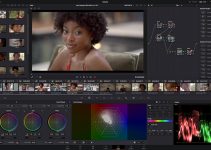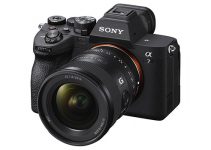Shooting with large format cameras is an emerging trend in the film industry these days. Big budget productions (typically Hollywood-level projects) have progressively begun to bask in this technological marvel in order to take advantage of the superb video quality and unique visual aesthetics produced by these exquisite acquisition tools.
When it comes to large format shooting, most filmmakers tend to go with cameras from ARRI, specifically the ALEXA 65 or ALEXA LF. Unfortunately, renting, let alone buying these cameras can cost thousands and thousands of dollars which most of us may not have. Surprisingly, this video produced by Media Division showcases a curious experiment revealing how to transform a Super 35mm camera into a large format 65mm beast.
To create a large format image, you’ll need a camera with a Super 35mm sensor. There are several options to choose from referring to this particular sensor size, including the Blackmagic URSA Mini, Sony FS5, and Canon C300. For the purposes of this test, however, the Panasonic EVA-1 was used.
With the EVA-1 put on its side, the camera recorded video from four different positions, differing in the x-axis and then stitched together in post. The resulting image – a 12K video sample, downscaled to 8K in post.
To properly shoot the footage, the camera needed to be mounted and adjusted with absolute precision. That’s why, the EVA-1 was rotated on its side and attached to a micro mount that the camera’s position and movement could be numerically tracked, ensuring an exact lineup of all four shots in post.
Besides the camera itself, getting a 65mm image out of a Super 35mm camera would not be possible unless you’re shooting with a 65mm lens. For this experiment, a Mamiya-Sekor C 80mm f/1.9 Vintage Medium Format lens was used while being attached to an old Mamiya setup, mounted on a movable arm.
Once all the footage was shot, the resulting clips were brought into Adobe After Effects where all the footage was stitched together and finished with some color correction and grading.
Putting pixel peeping aside, the final image looks extremely sharp, thanks to the extra amount of resolution gained from the 12K sample. However, because of the specific camera used, the proper colors and grain that’s typically associated with an ARRI Alexa LF or ALEXA 65 are still missing.
Nevertheless, Media Davison’s experiment looks like a pretty intriguing exploration into the difference between Super 35mm and 65mm large format acquisition that shows how you can emulate this unique cinematic look even with a prosumer Super 35 camcorder costing altogether what you would normally pay for renting out an ALEXA 65 just for a day or two at most.
[source: Media Division]
Disclaimer: As an Amazon Associate partner and participant in B&H and Adorama Affiliate programmes, we earn a small comission from each purchase made through the affiliate links listed above at no additional cost to you.



